
views
X
Research source
This type of buffer isn’t difficult to make, though you do need a background in chemistry and some basic laboratory supplies to get the job done.[2]
X
Research source
You can make a simple buffer by mixing exact amounts of dibasic sodium phosphate and potassium phosphate together, or by using a combination of dibasic sodium phosphate and monobasic sodium phosphate.
Making a Buffer with Potassium Phosphate
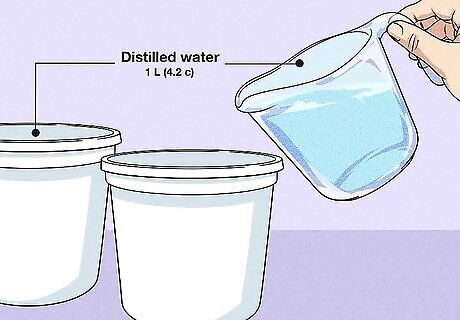
Pour 2 L (8.5 c) of distilled water into 2 large, reusable containers. Double-check that you’re using exactly 1 L (4.2 c) for your buffer. Always use distilled water instead of tap so the pH can be as accurate as possible. You can find distilled water at most stores selling laboratory supplies. Each container should have 1 L (4.2 c) of distilled water in it.
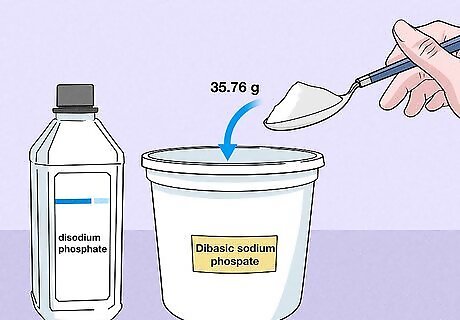
Stir 35.76 g of Na₂HPO₄ into 1 container of water. Mix in the powder until it’s completely dissolved in the water. Label this as dibasic sodium phosphate, so you don’t get your buffer ingredients mixed up.

Add 9.08 g of monobasic potassium phosphate into the other container. Stir in the ingredient until it’s completely mixed with the distilled water. Be sure to label this container as well, so you can tell your ingredients apart.
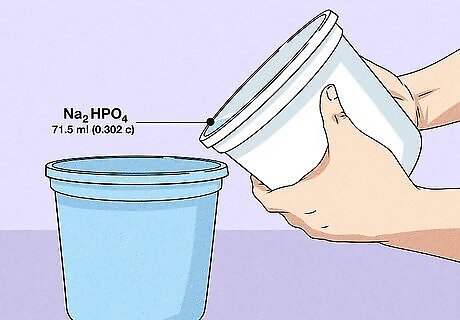
Add 71.5 mL (0.302 c) of Na₂HPO₄ into an empty container. Set out a large, reusable glass container on your workspace, then pour in a large amount of dibasic sodium phosphate. Measure exactly 71.5 mL (0.302 c) into the container so the mixture can be exact. The container needs to be able to hold at least 1 L (4.2 c) of fluid.
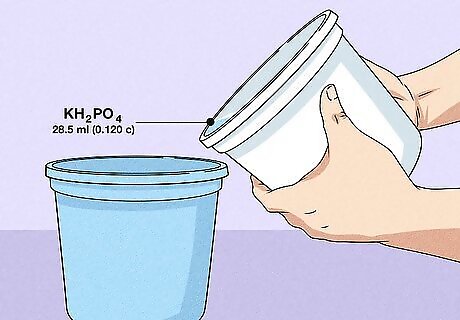
Mix in 28.5 mL (0.120 c) of KH₂PO₄ with the Na₂HPO₄. Stir a small amount of potassium phosphate into the container. Check that you’re adding exactly 28.5 mL (0.120 c) to the mixture, so the buffer’s pH can be as accurate as possible. The ratio needs to be exact, or else your buffer may not have the right pH.
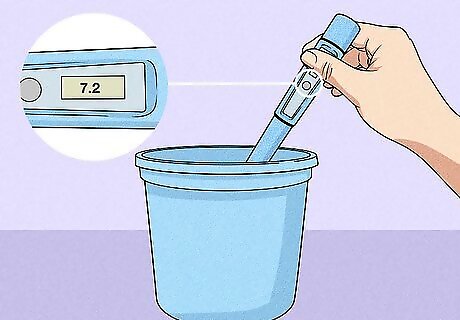
Check the pH to see if it’s 7.2. Take a pH tester and stick it into the mixture. Look at the testing electrode to see if the pH is 7.2, or if it’s higher or lower. If the pH isn’t exact, you may need to create a new mixture using more exact ratios of dibasic sodium phosphate and potassium phosphate. You can get a pH testing electrode at most places that sell laboratory supplies. Alternative pH Ratios 5.0 pH: 1 mL (0.0042 c) of NA₂HPO₄ and 99 mL (0.42 c) of KH₂PO₄ 6.0 pH: 12 mL (0.051 c) of Na₂HPO₄ and 88 mL (0.37 c) of KH₂PO₄ 8.0 pH: 94.5 mL (0.399 c) of Na₂HPO₄ and 5.5 mL (0.023 c) of KH₂PO₄
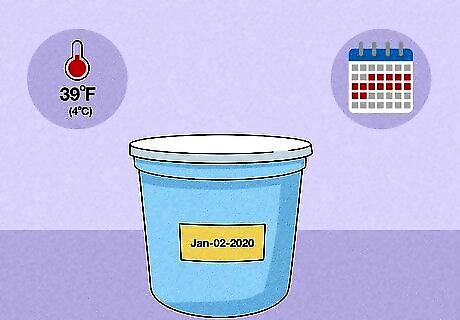
Store your mixture for 2-3 weeks at 4 °C (39 °F). Seal the top of your phosphate buffer container and label it with the current date. Keep it in a cool area for safekeeping, and use it whenever you need to neutralize a mixture. After a few weeks, toss out the buffer and make a new one, since phosphate buffers can be a breeding ground for small organisms over time.
Working with Only Sodium Phosphate
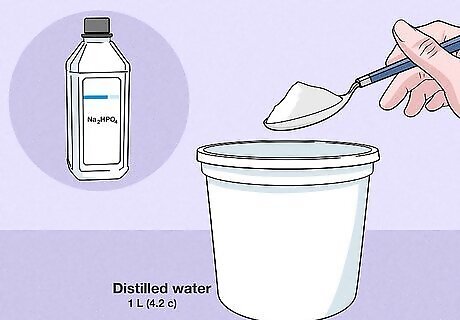
Stir 35.61 g of Na₂HPO₄ in 1 L (4.2 c) of distilled water. Pour a large amount of distilled water into an empty, reusable container and stir in the measured powder. Wait for the ingredient to dissolve completely, then label the container.
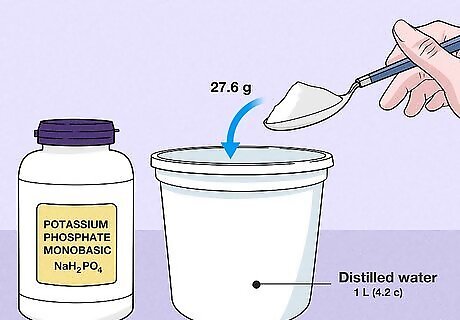
Mix 27.6 g of NaH₂PO₄ into 1 L (4.2 c) of distilled water. Measure the powder into the distilled water and stir both ingredients together. Label the container so you can tell all of your buffer ingredients apart.
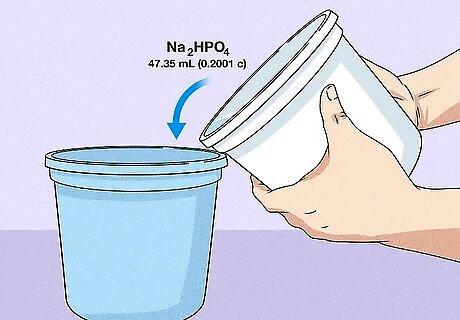
Make a basic solution with a large amount of Na₂HPO₄. Think about what you’d like the pH of your phosphate buffer to be. You can make your mixture as acidic as 5.8 or as basic as 8.0, depending on the ratio of your buffer. Pour in a 47.35 mL (0.2001 c) of Na₂HPO₄ in a separate container eto make your buffer more basic, and a smaller amount to make it acidic. For instance, a buffer with 47.35 mL (0.2001 c) of Na₂HPO₄ would yield a buffer with a pH of 8.0, while 4 mL (0.017 c) would give you a pH of 5.8.

Add in a small amount of NaH₂PO₄. Pour in 2.65 mL (0.0112 c) of NaH₂PO₄ into the container with the liquid Na₂HPO₄. Mix both ingredients together thoroughly to finish making the buffer. For example, 46 mL (0.19 c) of NaH₂PO₄ and 4 mL (0.017 c) of Na₂HPO₄ give you a buffer with a 5.8 pH, while 2.65 mL (0.0112 c) of NaH₂PO₄ and 47.35 mL (0.2001 c) of Na₂HPO₄ give you a pH of 8.0. For something more neutral, like 7.2, mix 36 mL (0.15 c) of Na₂HPO₄ with 14 mL (0.059 c) of NaH₂PO₄ together.
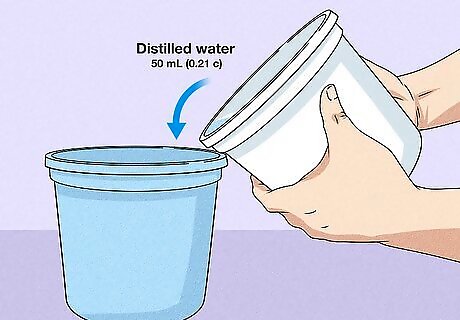
Dilute the buffer with 50 mL (0.21 c) of double distilled water. Pour a large amount of purified water into your mixture to help dilute the buffer and make it more effective. As a rule of thumb, the buffer and diluted water need to be at a 1:1 ratio.
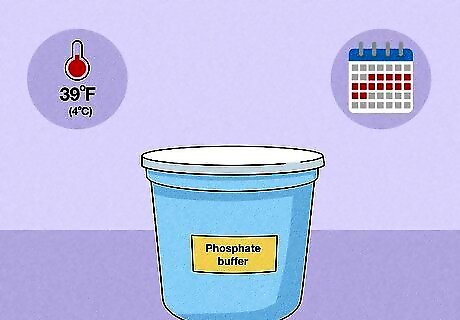
Label and store your diluted buffer at 4 °C (39 °F). Seal the top of your reusable container and label it as a phosphate buffer. Keep the mixture in a really cool area for 2-3 weeks, using the buffer as needed. Make a new batch after a few weeks, as phosphate buffers tend to foster unwanted growth.




















Comments
0 comment